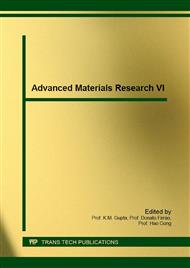p.7
p.12
p.17
p.23
p.29
p.37
p.43
p.48
p.55
Damages Caused by Projectile Impact
Abstract:
Impact conditions involve velocities below the sonic speed, which is normally of the order few hundreds up to few thousands m/s. The implications of impact depend on projectile and target materials, impact velocity, incident angle and the mass and shape of the projectile impacting head. The superimposition of progressing and reflected waves can lead to local stress levels that exceed the material’s strength, thus causing cracks and / or fracture at significant velocities. At low impact velocities, plastic deformation normally prevails. With increasing velocities the projectile will leave a hole in the target. With decreasing target thickness, the effects range from perforation, via internal cracks, and finally to plug formation. In this paper, the damages caused by impact which include: perforation, plugs formation and their fracture, metallurgical changes e.g. shear bands, twinning, recrystallization and phase transformation and fractures both in the projectile and the target plate are presented and discussed.
Info:
Periodical:
Pages:
29-33
Citation:
Online since:
April 2016
Authors:
Keywords:
Price:
Сopyright:
© 2016 Trans Tech Publications Ltd. All Rights Reserved
Share:
Citation:


